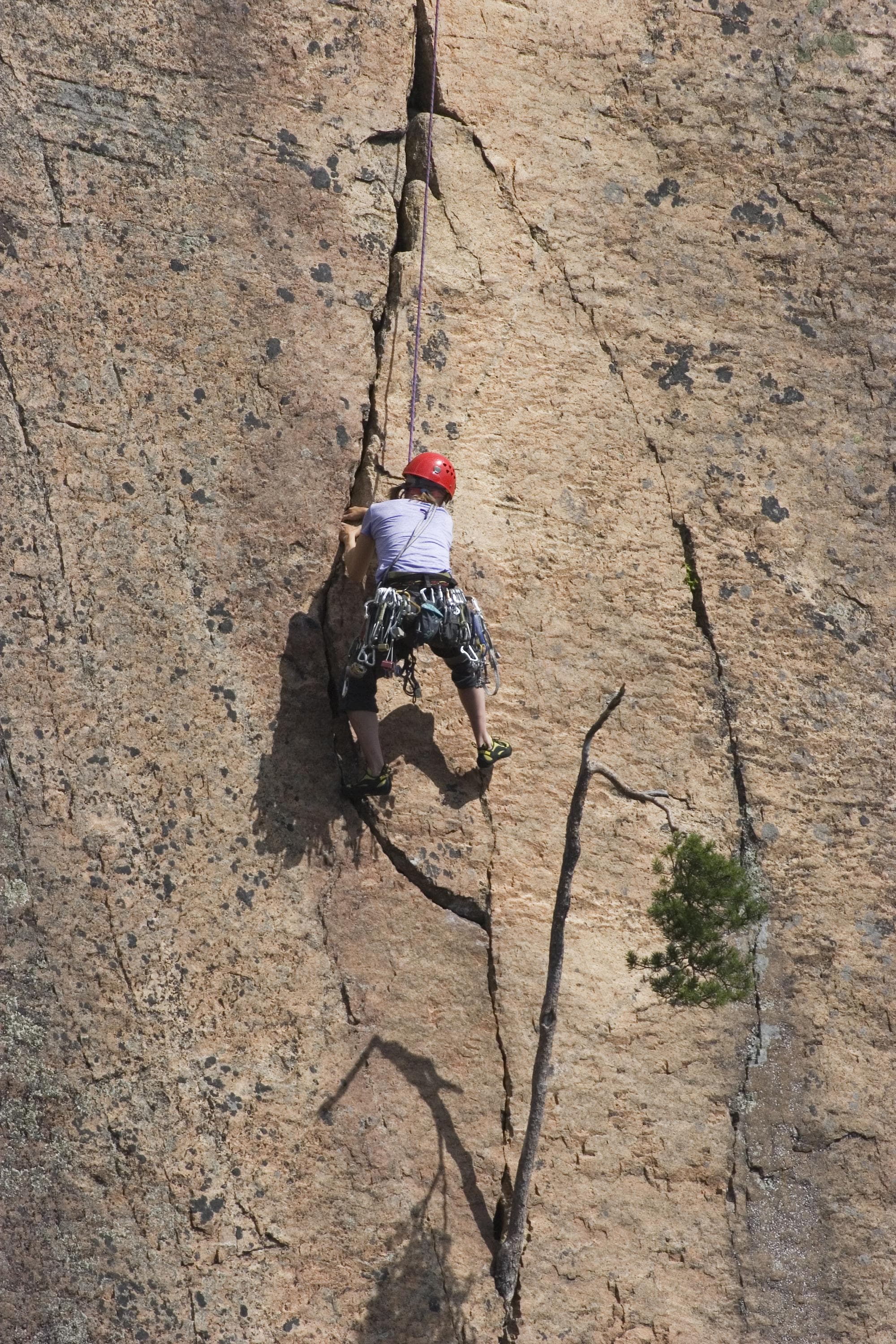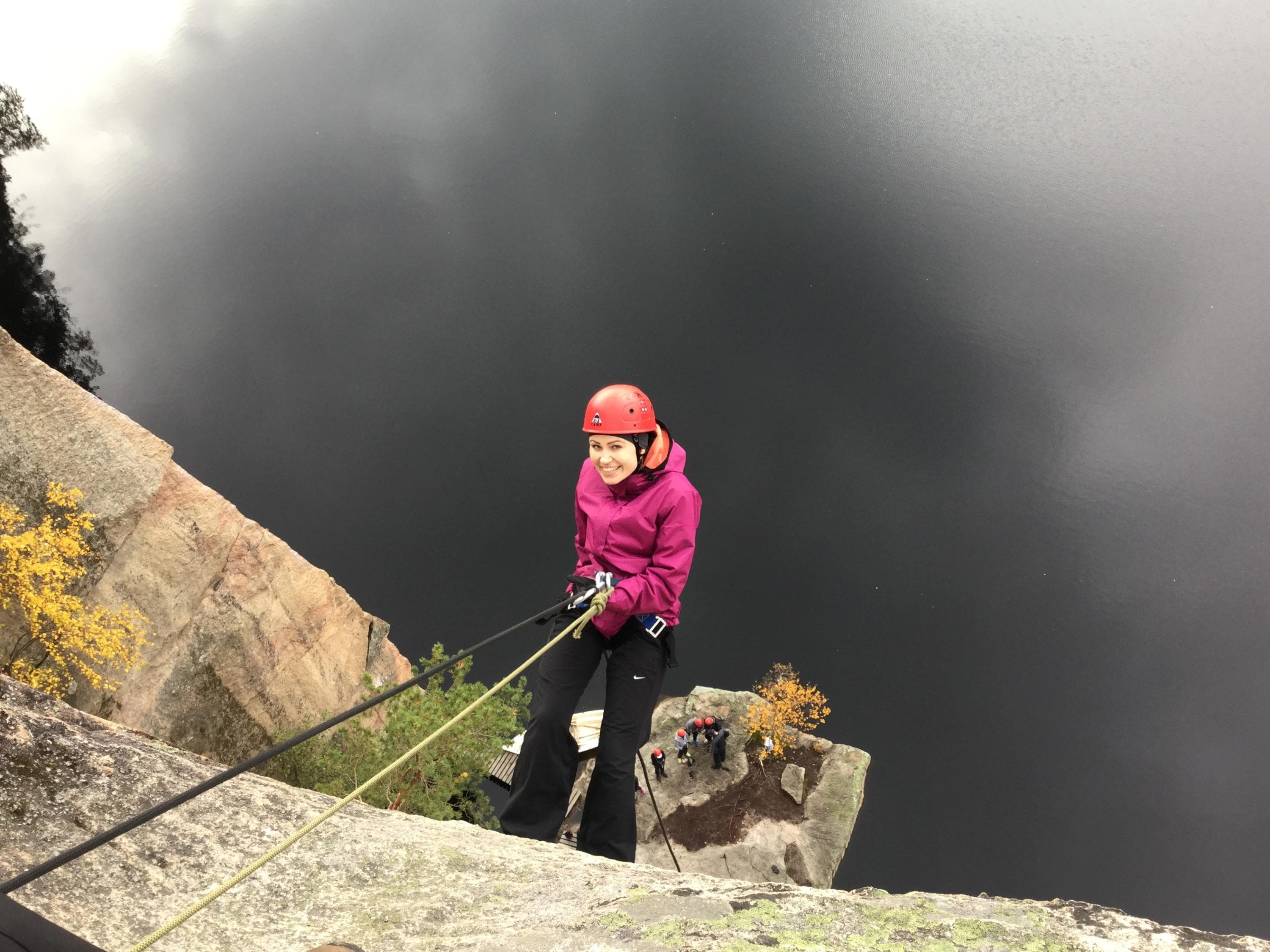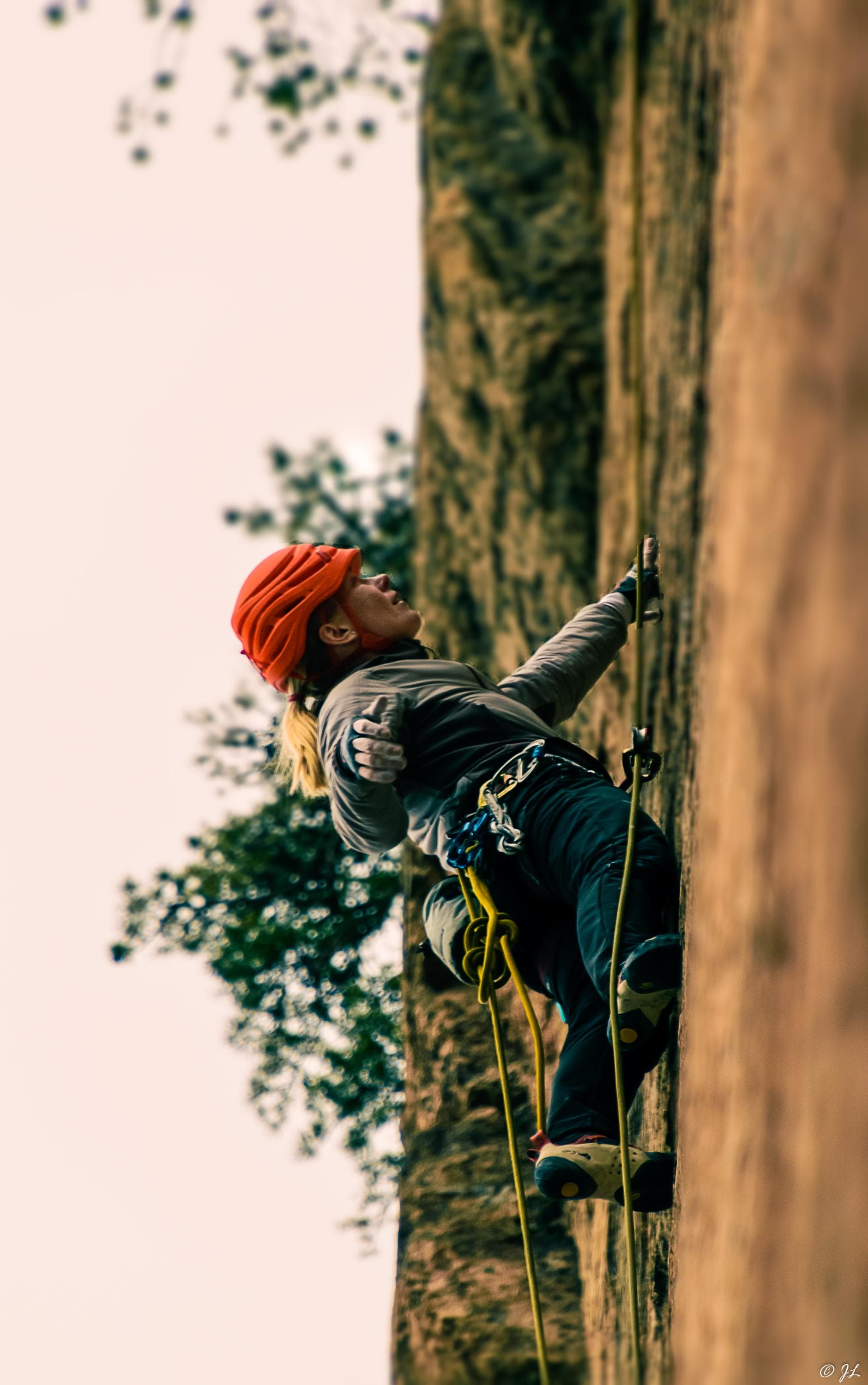Rope climbing is also a social hobby, because you can’t do it without another person at the other end of the rope. What do you think about going to Finland’s most magnificent rock climbing destination at Olhavanvuori Hill in Repovesi National Park to climb an incredibly rugged cliff rising straight out of the lake?
Finland cannot be called a climbing paradise, because the effects of time and the climate have made our mountains low. The last Ice Age finished off this work by wearing away the remaining peaks of our bedrock. However, Finland does have places to climb – the highest granite walls suitable for climbing are approximately 40 metres high. The colour and composition of our beautiful granite varies from one area to another, but it is not easy on climbers. Our bedrock has relatively few handholds and this produces skilful climbers.
To ensure that climbing is safe, you need competence, the right equipment and a healthy dose of caution. You should not climb without proper training. The best way to start a climbing is to contact the nearest climbing club or visit a climbing gym. The clubs organise climbing courses, rent equipment and offer supervised opportunities to try the activity. Another way to learn about climbing is by utilising services offered by companies providing programme activities. However, it is always a good idea to ensure that the guide has sufficient training to guide climbing.
Climbing disciplines
Bouldering
Bouldering refers to climbing without a rope. The name of this discipline comes from the English word boulder, which refers to a large rock. Bouldering can be done on these boulders and low rock faces. When a climber falls, they drop onto mats placed underneath and their climbing partner guides the fall.
Rock climbing
Rock climbing is made possible by natural shapes and cracks or bolts placed in the rock. The climber clips a rope to the anchor points as they progress, and a safety person standing below feeds out the rope. People can also climb using a top rope, which means placing a safety rope above the route.
Traditional climbing involves placing the safety devices in natural cracks and removing them after climbing. Sport climbing makes it possible to climb more difficult walls, as the bolts drilled into the rock serve as anchor points.

Ice climbing
Ice climbing involves climbing along an ice wall using ice axes and crampons. Ice walls are formed in nature when water running down steep cliffs freezes. Safety is ensured with ice screws or an anchor point at the top of the wall. Ice climbing is the only form of climbing that you can also do outdoors in winter when the temperature is below zero. Ice climbing leaves the least traces in nature, as the layer of ice protects the rock and its vegetation.
Mixed climbing refers to winter climbing using ice axes and crampons on ice and bare rock – depending on what is available. Mixed climbing may cause significant wear to the vegetation.
Rappelling
Rappelling is not actually a climbing discipline, because the climber is going in the wrong direction. Rappelling means using a rope to descend, for example, a rock face.

Activities that require permission from the landowner
Allowed without a permit
- Occasional ice climbing and climbing on rocks and boulders where no moss and lichen is growing and which causes no damage or wear to the vegetation.
- Occasional rappelling that causes no wear to the vegetation.
- Ice climbing, bouldering, rock climbing and rappelling on climbing routes established for that purpose at hiking destinations. Climbing opportunities are described on each destination’s Activities page.
Activities that require permission from the landowner
- Removing handholds, rock drilling and bolting.
- Setting new climbing routes if this damages the vegetation by, for example, by brushing off lichens and mosses or cleaning cracks in the rock.
- Regular activities involving groups of several people if this exposes the vegetation to possible wear.
If you participate in a climbing excursion organised by a tourism entrepreneur or a climbing club, the organiser of the excursion will obtain the necessary permits for the entire group.
Instructions and rules for climbing sites are available for each site in the Outdoor Destinations section of the Luontoon.fi service. In nature reserves, climbing is either permitted in places that can best tolerate wear, restricted in some other way, or completely prohibited in order to protect the species in a certain area. The instructions will be updated as management and land use planning progresses in the areas. Areas are continuously being transferred to Metsähallitus for nature conservation purposes. For this reason, information on all areas is not always available on the website.
The Finnish Climbing Association (kiipeilyliitto.fi, in Finnish) occasionally publishes a guide book that contains information about the rock climbing routes in Finland. The most recent guide book was published in 2008. All of the routes in the guide book have valid permits. The guide contains instructions and rules for each site. The Finnish Climbing Association is responsible for the validity of these permits. When climbing outside set routes, each climber is responsible for obtaining the required permits. The easiest way to find out about rock climbing possibilities is to contact the climbing club in that area.
